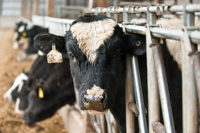Bringing traceability to the forefront






National Cattlemen’s Beef Association (NCBA) and the beef industry have long been supportive of animal identification for animal health purposes.
“The goal of any disease traceability program should be to enable the cattle industry, and state and federal animal health officials to respond rapidly and effectively to animal health emergencies,” says Kathy Simmons, NCBA’s chief veterinarian. “Additionally, our industry currently utilizes animal identification to support genetic improvement and source verification programs, grid marketing programs and other methods where individual animals are tracked through the production chain so as to enhance genetic improvement decision making. Finally, the Beef Quality Assurance program and other good management programs that utilize individual animal identification have become more widely adopted across the country.”
Traceability challenges
Every stage of the industry maintains some type of records, but the complexity comes in compiling those records and making them accessible to find the information needed.
“We are such a large industry and there are so many producers and there are so many different stages within that animal’s lifetime that the chain of custody will change so many times during that animal’s lifetime,” says Steve Sands, vice president of protein for Performance Foodservice, Richmond, Va. “All those factors make it very, very difficult to compile the data, but the data is there.”
The current challenges of traceability in the United States are the size of the industry itself along with the tremendous variation in size of the producers. As such, the challenge becomes developing a universal system that can apply across the broad spectrum of diversity.
“Technology is a possible answer certainly, but, I think some of the radio frequency technologies and such are maybe not delivering on the promise of what they are capable of yet,” Sands says. “I think they’ll get there. But even then technology is challenging, because while a large operator might be able to pay for the technology, cost could be prohibitive to some of the smaller guys.”
As a food product distributor, Performance Foodservice also sees the positive marketing advantages of traceability. The company, which is more interested in meat versus animal traceability to improve the quality and insure the safety of its products, has been using DNA testing to maintain traceability.
“Traceability needs to extend through the entire supply chain right to the consumer,” Sands says.
Traceability approaches
Previously, attempts by United States Department of Agriculture (USDA) Animal and Plant Health Inspection Service to reach an effective animal identification system failed due to a lack of flexibility and transparency. The current animal disease traceability program offers a flexible approach in which states and tribes can develop systems for tracing animals that work best for them and for the producers under their jurisdiction, NCBA’s Simmons says.
“This flexible system creates a much less burdensome program for the users,” she explains. “The increased flexibility provides better economy, increased compliance and less market disruption. The purpose of the animal disease traceability system is to provide animal disease surveillance, control and eradication. This goal is best achieved through a flexible system that operates at the speed of commerce.”
Russell Cross, professor and head of Texas A&M’s Department of Animal Science, College Station, Texas, believes that the United States trails every other developed nation is disease traceability and the country would benefit from a mandated system that is uniform nationally.
“The voluntary system is a compromise and is mainly faulted by the lack of ability to mobilize and use real or near real-time information,” Cross says. “The failure of the USDA to bring about a uniform animal ID program has resulted in creating producer mistrust and opposition to any ID program. The aborted premise registration effort only signed up 30 to 40 percent of the producers. The only mandates for traceability today exist in branded programs that require tracking of animals during their lifetimes.”
Cross says that if the USDA had first put forth an educational effort modeling what would happen in the United States if the country had an outbreak of a foreign animal disease (FAD) and explain the consequences of such an outbreak to the average producer, the industry would have been more willing to comply to the now-defunct National Animal Identification System.
“If they had started the program slowly with just a rudimentary program and then built on that and refined it as technology grew, we wouldn’t be having this discussion,” he says. “Instead they wanted government approved EID tags, readers at every point of sale and slaughterhouses all wired to the government database that they would manage. The resistance was instantaneous and overwhelming.”
Cross suggests that if the animal ID team at USDA could be induced to cooperate with the Farm Service Administration, which each farm and ranch has now, the U.S. government could have complete premise registration now.
“If USDA made it plain to beef producers that if they tagged their cattle with their premise numbers, they would be indemnified in the case of an FAD outbreak,” he says. “Those who chose not to tag would have to stand any losses themselves. This investment in ID would become more like crop insurance, which everyone understands. Peer pressure would also work on those who do not tag, as they would endanger others.”
In Canada, the Canadian Cattle Identification Program is an industry‐initiated and established traceback system designed for the containment and eradication of animal disease. The system uses premises identification, the assignment of a randomly generated, unique identification number to a physical land location referred to as a premises identification number(PID). Canada’s traceability system then is based on three pillars:
1. Animal identification — Associating a unique animal identification number to a location and time.
2. Premises identification — The assignment of a randomly generated, unique identification number to a physical land location.
3. Movement — Associating the animal identification number with a premises and time. Since animal identification and premise identification equal movement, a PID is required to track animal movement.
In Canada, while full implementation in 2002 of the mandatory animal identification program has achieved 99‐100 percent program compliance for animal identification, premises identification still falls under provincial/territorial jurisdiction, according to the Canadian Cattle Identification Agency (CCIA). Since PID is mandatory in Manitoba, Alberta and Quebec, but voluntary in all other provinces and territories, there are multiple approaches to PID in Canada, the agency says.
At present, the Canadian government is coordinating an effort to link the various provincial PID databases to the Canadian Livestock Tracking System (CLTS) database to ensure accurate PID information is recorded within the CLTS, regardless of number structure, CCIA says.
The approach that is clear is the entire beef industry is placing renewed emphasis on preventing the introduction of FAD and maintaining vibrant beef export markets by remaining at the forefront of any discussions regarding animal disease traceability programs.
Looking for a reprint of this article?
From high-res PDFs to custom plaques, order your copy today!












